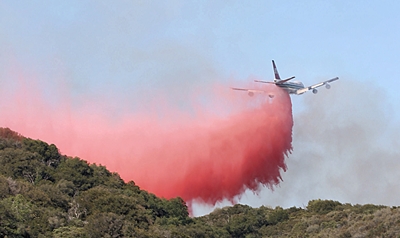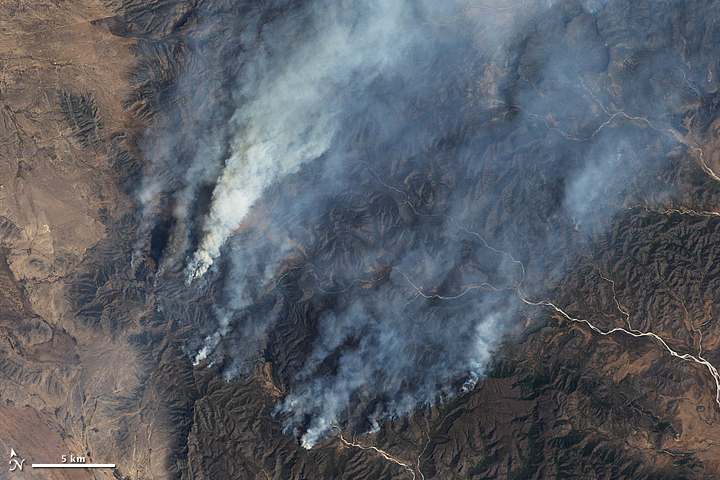Saturday morning two C-130 aircraft with Modular Airborne Fire Fighting Systems (MAFFS) left Peterson Air Force base in Colorado Springs, Colorado for Mexico to assist with two large fires that are burning about 60 miles south of the Texas border. They arrived later in the day at Laughlin Air Force Base, which they will use as a reload base, and are already dropping water mixed with foam concentrate on the fires. That’s right, not long-term fire retardant, but foam.
The MAFFS units, which hold about 3,000 gallons, are owned by the U.S. Forest Service and slip into the C-130’s cargo bay fairly quickly to convert the transport planes into air tankers. Normally they drop retardant but apparently they were not able to work out the logistics of acquiring it for this mission.
The MAFFS aircraft have been authorized to drop four loads per day per aircraft, for up to seven days.
Evergreen’s 747 Supertanker has been working on the fires in Mexico since April 12. Steven Daniels, of Evergreen Aviation, told Wildfire Today that the massive air tanker has dropped 12 loads of retardant, 20,000 gallons each, for a total of 240,000 gallons.

The Bomberos, or Mexican firefighters, are not totally familiar with the use of retardant and wonder why the 747 is not dropping directly on the fire or flames, but instead is dropping just ahead of the fire. They are learning that dropping ahead of the fire is the best way to slow it down, and that an air tanker can’t put out a fire completely, it takes support from ground personnel to follow-up after the drop.
Two Air-Cranes operated by Helicopter Transport Services have also been working on the fires in Mexico.





